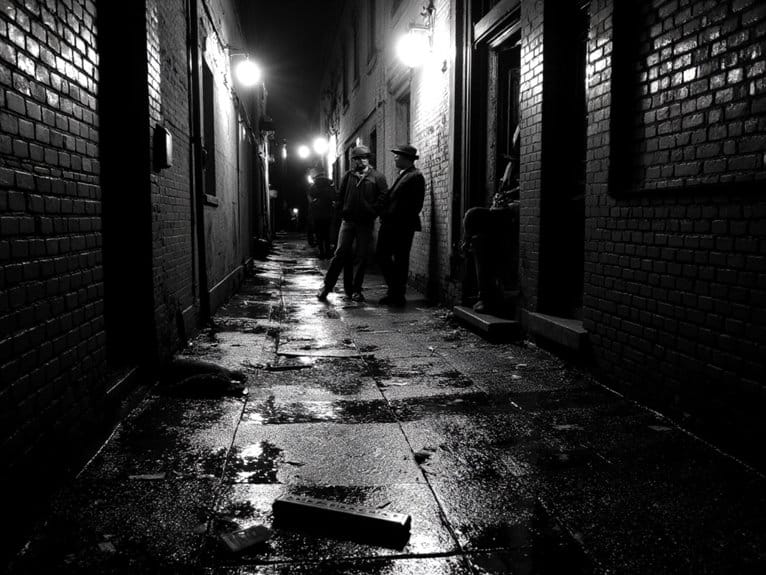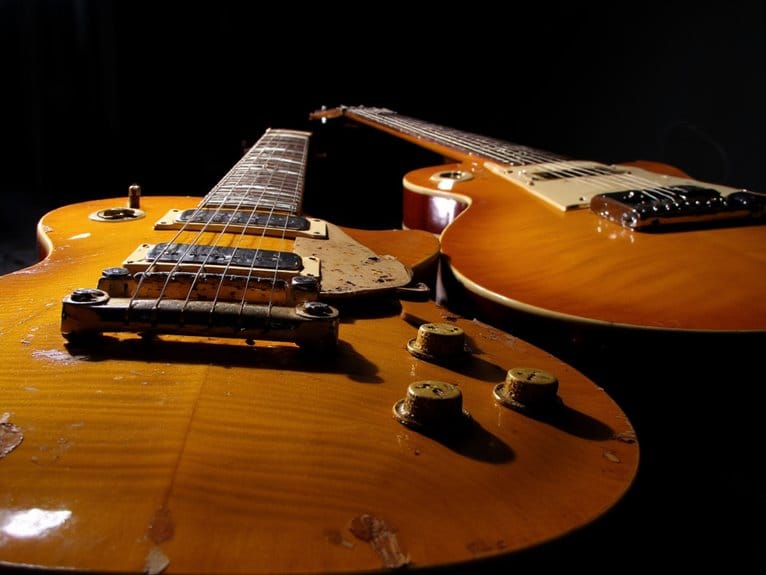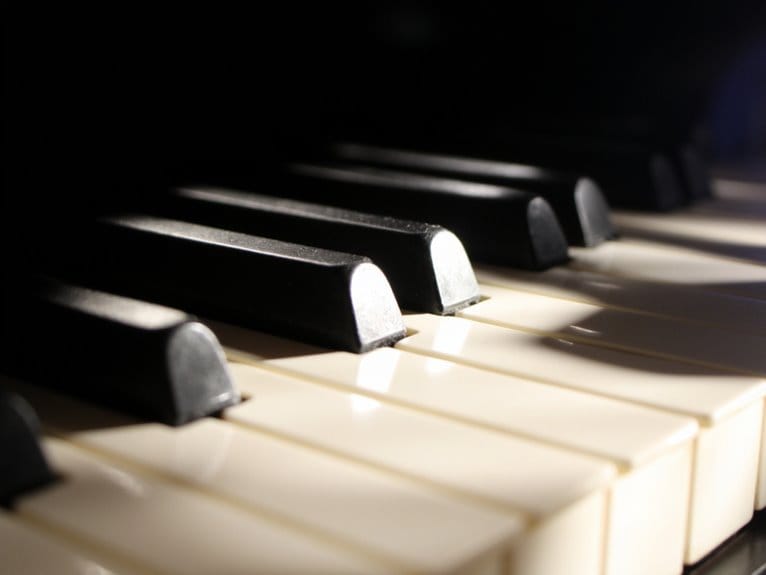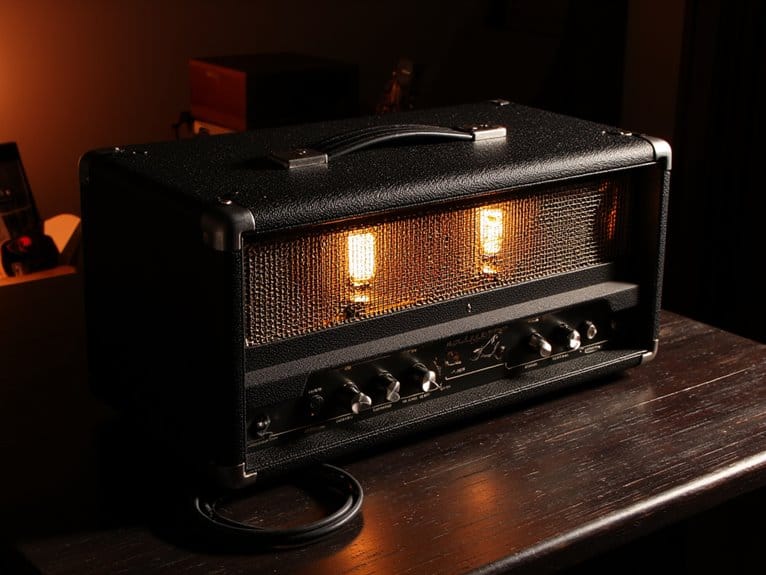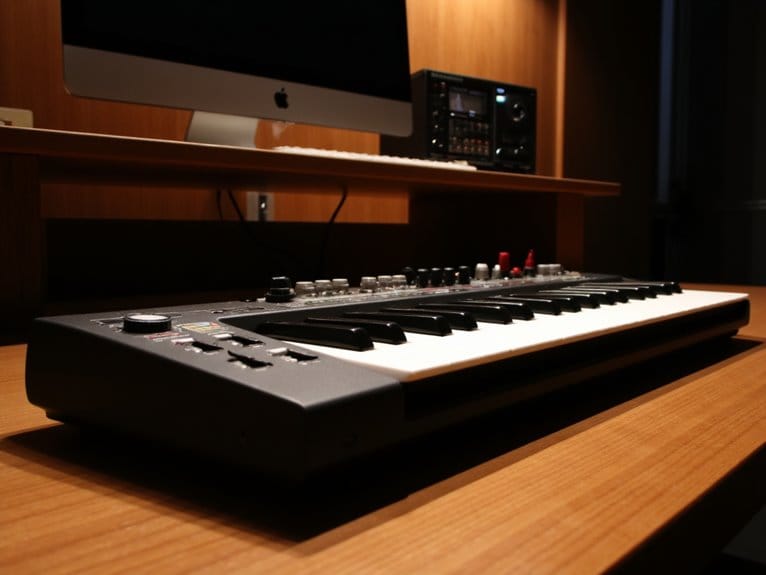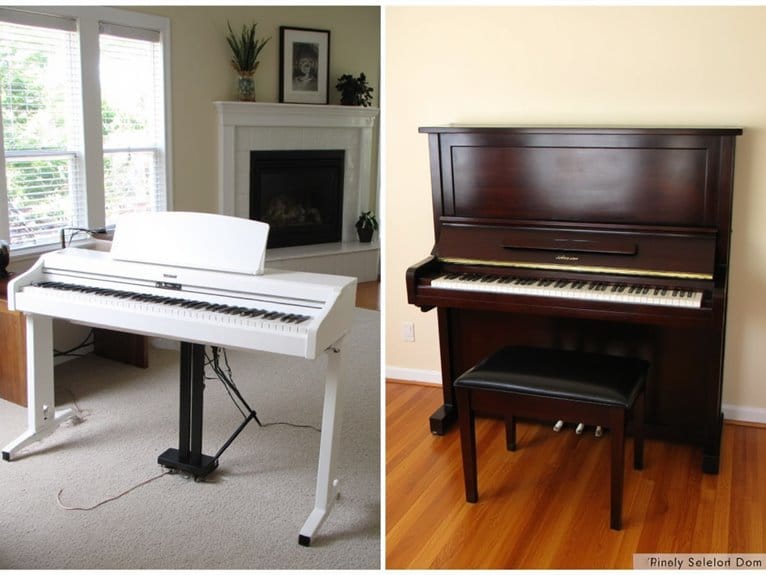The Blues Mythology – Margins, Fights and Stabbings: The Dark Side of History
You’ve heard the romanticized blues stories, but the real history’s soaked in blood and brutality. Born from post-Civil War oppression, blues emerged from Mississippi Delta juke joints where razor fights, ice pick violence, and police brutality were daily realities. Musicians like Memphis Minnie documented actual stabbings and social conflict through coded lyrics, transforming intimate violence and racial terror into powerful resistance music. These weren’t just songs—they were survival testimonies from America’s violent margins, and there’s much more darkness beneath the surface.
We are supported by our audience. When you purchase through links on our site, we may earn an affiliate commission, at no extra cost for you. Learn more.
Notable Insights
- Blues mythology romanticizes artist suffering while obscuring the brutal realities of post-Civil War segregation and sharecropping exploitation.
- Juke joints became violent pressure cookers where disputes over respect and resources erupted into razor fights and stabbings.
- Razor and knife symbolism in blues lyrics documented actual violence, serving as authentic testimonies of survival in marginalized communities.
- The “Bad Man” archetype emerged from Reconstruction-era lynchings, channeling trauma into narratives of defiance and masculine aggression.
- Female blues artists like Memphis Minnie countered male violence narratives, revealing intimate partner violence normalized through coded musical expression.
Born From Blood and Oppression: the Violent Origins of Blues in the American South
When you dig into the real story behind blues music, you’ll discover it wasn’t born from some romantic notion of musical inspiration, but rather from the blood-soaked reality of post-Civil War America.
Blues music emerged from the brutal realities of post-Civil War America, not romantic musical dreams.
The late 1860s Mississippi Delta became ground zero for this musical heritage, where freed African Americans faced Jim Crow segregation, sharecropping exploitation, and rampant lynchings during Reconstruction’s violent aftermath.
You’ll find that blues emerged as freed slaves gained mobility and time to process their trauma through personal storytelling, replacing communal slave songs with individual expressions of grief and resilience.
This blood legacy transformed West African musical traditions into something distinctly American, capturing both the terror of lynch mobs and moments of euphoric survival in a hostile world. The boll weevil devastation of cotton crops further intensified these struggles, forcing many to abandon their agricultural livelihood and seek new means of survival.
With drumming outlawed by oppressive authorities, these survivors developed complex rhythms through singing and clapping, creating the rhythmic foundation that would define the genre.
Voices of Resistance: How Blues Musicians Challenged White Authority and Police Brutality
Behind the seemingly simple chord progressions and melancholy vocals, blues musicians wielded their art as a sophisticated weapon against white supremacy, embedding coded messages of resistance that could slip past censors while rallying Black communities against systemic oppression.
You’ll find that blues resistance operated through veiled language and metaphor, allowing artists to critique police brutality without direct confrontation that could’ve proven deadly.
These musicians transformed secular music into political theater, lionizing outlaws who defied unjust authority while expressing outrage over legal failures that left Black Americans defenseless despite constitutional protections. The music served as an audio documentary of Black Southern history, capturing the harsh realities of exploitation and violence that defined the Jim Crow era. The blues maintained its connection to the call-and-response structure that preserved West African musical traditions while delivering these messages of resistance.
- Coded Language: Artists used metaphors and indirect references to criticize white authority while avoiding persecution
- Outlaw Heroes: Blues glorified figures who resisted unjust legal systems, creating alternative moral frameworks
- Community Solidarity: Music spread messages of Black citizenship and dignity during Jim Crow segregation
Masculinity Under Fire: Intimate Violence and Gender Struggles in Blues Culture
While the blues served as a powerful tool for challenging white supremacy, the music’s internal landscape reveals a more troubling dynamic where Black masculinity, already under assault from systemic racism, often reasserted itself through intimate violence and emotional domination within romantic relationships.
You’ll find that blues narratives frequently explore jealousy, betrayal, and revenge through lyrics that normalize intimate aggression as masculine expression.
These cultural expressions reflect real-world statistics, where approximately 17.5% of Black women experience severe physical intimate partner violence.
The stark reality behind the music: nearly one in five Black women faces severe intimate partner violence in their relationships.
The emotional turmoil embedded in these songs reveals how self-identity struggles manifest through interpersonal conflict, with musicians channeling their pain into gender dynamics that perpetuate cycles of violence. The prevalence of knives and razors in blues lyrics and musician folklore further reinforced these violent masculine archetypes.
This creates a complex legacy where resistance against oppression coexists with harmful masculine ideals.
Razors, Ice Picks, and Juke Joint Bloodshed: The Deadly Reality of Blues Life
I’ve spent years studying blues history, and I can tell you that the razor-sharp reality of this music extends far beyond metaphor—it’s literally written in blood across juke joint floors from the Mississippi Delta to Chicago’s South Side.
The razor symbolism you’ll find throughout blues lyrics wasn’t poetic license, it documented actual violence that erupted when masculinity, desperation, and social oppression collided in cramped social spaces.
- Ice pick violence and razor fights served as immediate responses to disputes over women, money, and respect in environments where black men had few outlets for asserting power.
- Juke joints became pressure cookers where external racial violence manifested as intraracial conflict, with edged weapons readily available.
- Musicians encoded these deadly encounters into their songs, creating authentic testimonies of survival.
These venues functioned as sites of place attachment where emotional bonds formed through shared trauma and cultural expression, even as they remained marked by violence and danger. Artists like Memphis Minnie provided crucial female perspectives that countered the predominantly male narratives of aggression and control.
From Pain to Power: How Violence Shaped Blues as a Force for Social Change
Though the razor fights and ice pick violence I described earlier paint a grim picture of blues culture, that same brutal reality became the crucible that forged one of America’s most powerful forces for social change. You see, when individual struggle met collective expression, something transformative happened—personal pain became shared power.
| Violence Era | Blues Response |
|---|---|
| Reconstruction lynchings | “Bad Man” archetype emerges |
| Jim Crow segregation | Protest songs like “Strange Fruit” |
| Police brutality | Community solidarity building |
The blues didn’t just document suffering; it facilitated cultural reclamation. Artists transformed their communities’ trauma into dignity, creating narratives that challenged white supremacy while fostering resilience. This emotional alchemy laid groundwork for civil rights movements, proving that authentic expression of oppression could mobilize consciousness and inspire lasting social change. Just as blues musicians used steel strings to produce brighter, more piercing sounds that could cut through the noise of injustice, their messages demanded to be heard above the din of systemic oppression. The genre’s profound impact extended far beyond American borders, as blues resonated with global audiences facing their own struggles with injustice and oppression.
On a final note
You’ve witnessed how the blues emerged from America’s darkest chapters, transforming violence and oppression into raw, powerful music that challenged systemic injustice. While juke joints saw bloodshed and musicians faced constant danger, they created an art form that gave voice to the voiceless. The blues didn’t just document suffering—it became a weapon against it, proving that even in humanity’s bleakest moments, creativity and resistance can flourish.

